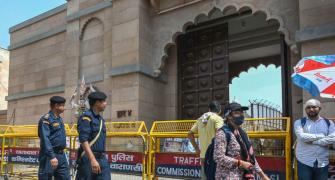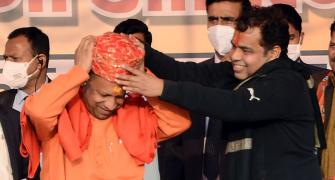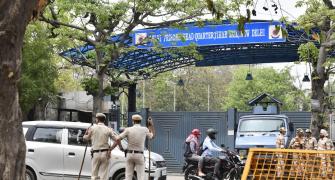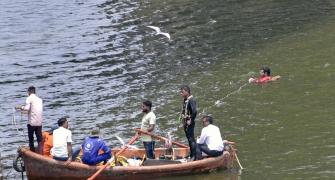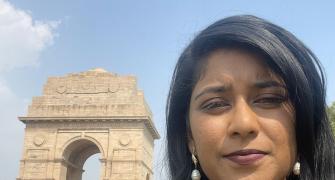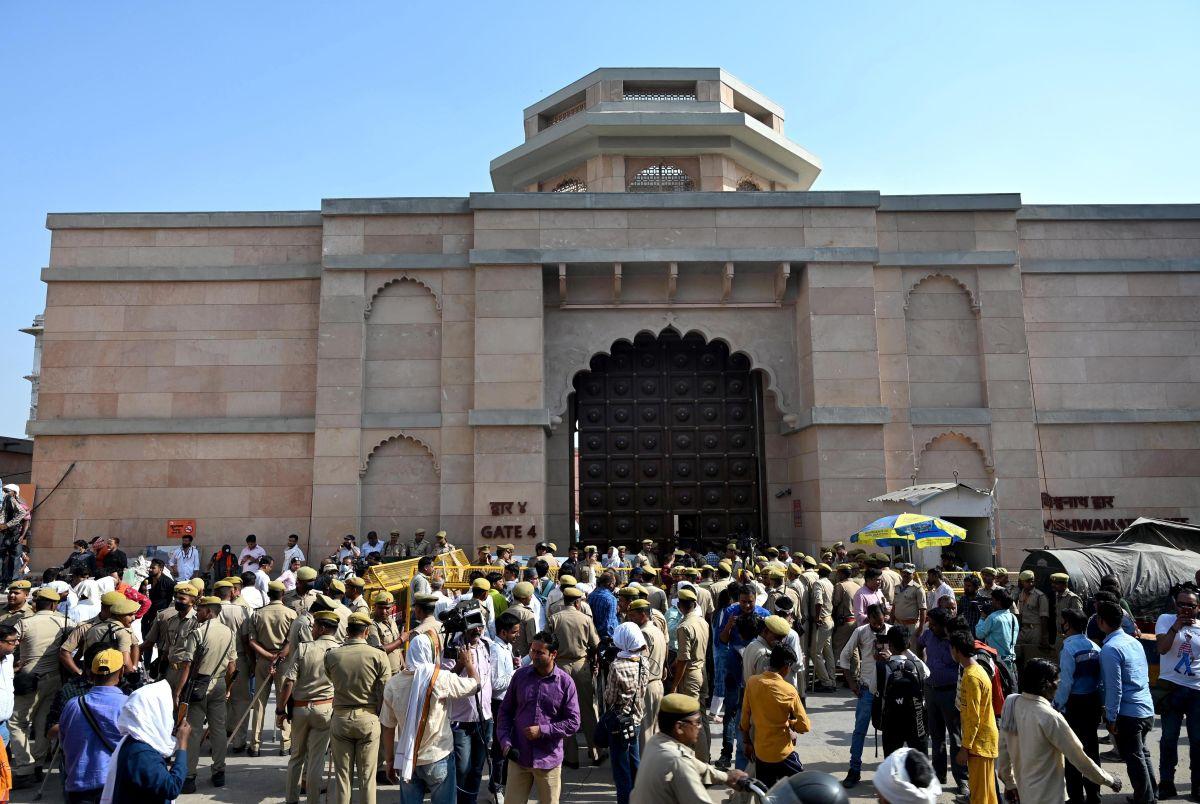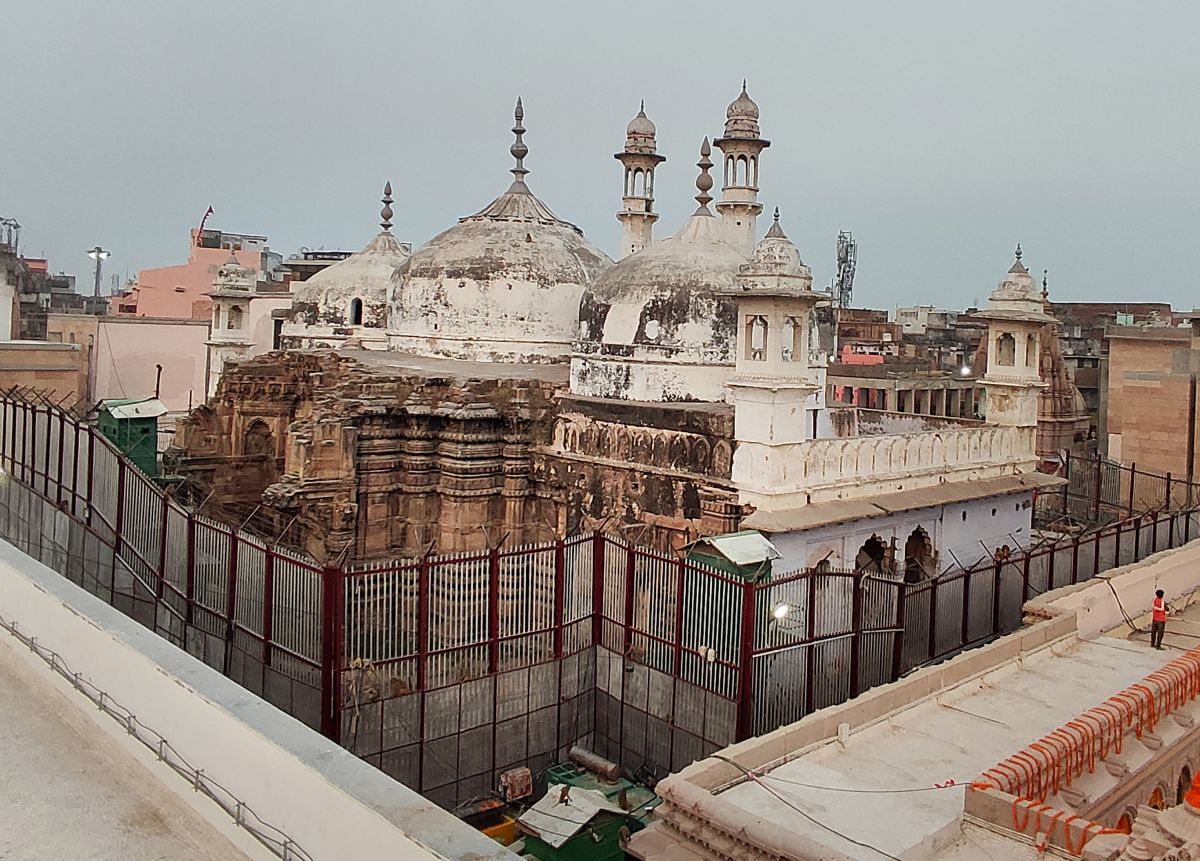'Aurangzeb supported construction of the Kumarswamy math and the reconstruction of the Kedar temple and supported the Jangambadi math in Banaras.'
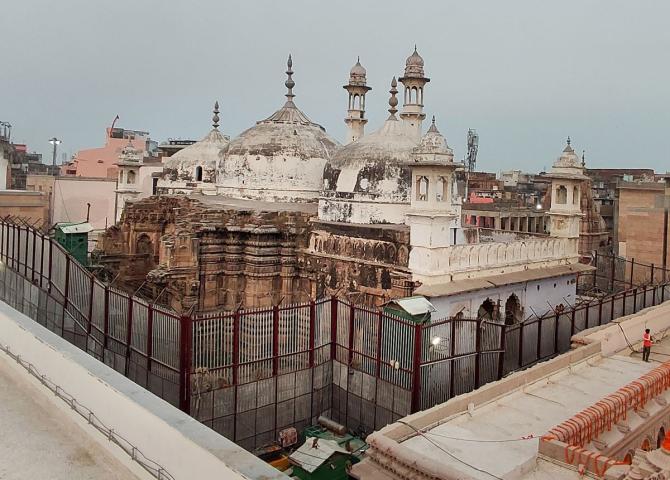
While the dust was settling in the Ayodhya matter with the construction of a a Ram temple, a Varanasi court order to conduct a survey of the Gyanvapi mosque, which is adjacent to the famous Kashi Vishwanath temple, and subsequent sealing of a portion therein after it was claimed that a 'Shivling' had been found in the premises, has triggered a vociferous debate on the issue.
It has reignited the centuries-old contention that the mosque was built by Mughal emperor Aurangzeb after demolishing the original Kashi Vishwanath temple.
Madhuri Desai, professor of Art History and Asian Studies at Penn State College of Arts and Architecture, has extensively covered this issue in her book Banaras Reconstructed: Architecture and Sacred Space in a Hindu Holy City, analysing the available historical sources to assess a series of claims and counter-claims.
"Destroying holy places, especially if they were closely connected to political authority, was a practice followed across the world. For Aurangzeb, this (the destruction of the Vishwanath temple) was a means to punish courtiers connected with the temple such as the Kacchawahas of Amber and the Bundelas of Orchha," Professor Desai says in an e-mail interview with Rediff.com's Utkarsh Mishra.
In your book Banaras Reconstructed, you have given several references that recount the repeated demolition and rebuilding of the Kashi Vishwanath temple. However, you say that 'there is no explicit record of any Vishweshwur temple being destroyed before the seventeenth century'. Can you tell us more about it?
Although several other writers and scholars have mentioned the 'repeated destruction', there is a lack of direct proof.
There is only one reference to the destruction of a Padmeshwur temple (not Vishweshwur) in Kashi during the thirteenth century.
Also, religious texts including the Kashikhand specifically mention 'lingas' and not temples. The first explicit reference to the destruction of a Vishweshwur temple dates to 1669.
Is it correct that destruction of holy places of the vanquished by victors was a process followed all over the world, including in pre-Islamic India, and the destruction of several temples by Mughal emperor Aurangzeb should not be seen in isolation?
But it also raises the question was it really about 'victor vs vanquished'? Does it authenticate the Mughals' portrayal as perpetual aggressors against other faiths followed in India?
The Mughals were never a single individual or a uniform entity throughout the life of the empire.
As we know, there were several Mughal emperors and each one was an individual with distinct ideas about religion and its place in his personal life as well as within the structure of the empire.
So, a blanket statement about 'the Mughals' cannot be valid.
In answer to the other question: Yes, destroying holy places, especially if they were closely connected to political authority, was a practice followed across the world, including India.
In your book, you also say that 'Vishweshwur emerged as a prominent linga and pilgrimage destination sometime between the twelfth and fourteenth centuries'. And that its 'role was incorporated within the city's textual traditions by the authors of the fourteenth-century Kashikhand'.
Does it mean that Vishwanath was not worshipped in Varanasi before the 14th century?
What about hymns written by Adi Shankaracharya that establish Vishwanath as one the of 12 Jyotirlingas across India?
The Vishweshwur linga is certainly mentioned earlier, including by Adi Shankaracharya, and was worshipped.
However, its place and relative importance within the overall sacred landscape of Kashi differed according to authors of different texts.
For instance, in the Krtyakalpataru, it is mentioned alongside several other lingas of Kashi and not granted a special place.
The Kashikhand is the first text in which several pilgrimages are detailed and they are all centered or focused on the Vishweshwur linga, thus underlying its special importance.
It was interesting to read that Malhar Rao Holkar, the father-in-law of Queen Ahilyabai Holkar who built the current Vishwanath temple, wanted to destroy the Gyanvapi mosque and build the temple there.
Is it also true that the local Brahmins of Varanasi opposed his move? Was it only because 'they feared the wrath of the Mughal court' or there was some other motive?
Historical sources suggest that was the case.
I have not come across any other reason being mentioned.
In the book, you say that Aurangzeb's 'interventions in Banaras may be more accurately analysed in light of his personal compulsions and political agenda, rather than as expressions of religious bigotry'.
And that during his reign, 'several religious institutions and practices remained undisturbed and were selectively supported, and even enhanced'.
Please tell us more about what prompted Aurangzeb to order the demolition of the Vishwanath temple and which other Hindu religious centres were supported by him in the city?
For Aurangzeb, this was a means to punish courtiers connected with the temple such as the Kacchawahas of Amber and the Bundelas of Orchha.
As I mention in the book, during his reign he implemented varied and often contradictory policies.
For instance, in 1658 he issued a farman extending State protection to existing temples in Banaras as well as their priests.
Aurangzeb supported the construction of the Kumarswamy math and the reconstruction of the Kedar temple (managed by this math) and supported the Jangambadi math in Banaras.
He granted land to the former and ratified existing land grants to the latter.
During the construction of the Kashi Vishwanath corridor, multiple small and big temples were demolished. It is claimed that several of them were of much historical importance.
The historic urban fabric dated largely from the seventeenth and eighteenth centuries so the temples would have been from the same period.
Most conservationists would classify them as 'historic'.
A claim which is often made to suggest the targeted destruction of temples by Mughals is that North India has no grand temples unlike the South. How do you see it?
North India actually does have prominent temples.
The temples at Khajuraho are a case in point. They are all built in the Nagara style (associated with North India) and represent its 'apex' in art historical terms.
These temples are contemporaneous with Chola temples from South India.
One must remember that many of the massive temple complexes in Southern India such as the Meenakshi temple of Madurai, was expanded only as late as the seventeenth century under Nayaka rulers who were successors of the Vijayanagara empire.
As I mention in my book, contemporary scholars were encouraging the Gahadavala rulers to build a temple in Banaras, which suggests that a major temple -- as opposed to the presence of lingas -- was yet to be built.
A fact that you also mention, that these mosques in Varanasi, Mathura and several other places considered sacred by the Hindus are right next to the temples, which suggests that they were built after destroying the original temples.
You say that 'this proximity could just as easily be viewed as being the result of a compromise or even a shared notion of sacred space'. Can you please elaborate further on it?
If you look at the Adi Vishweshwur temple in Banaras, it is built next to the mosque and one assumes that was probably the original location because of the presence of the mosque.
This is a form of speculation/compromise or now a 'shared notion' of sacrality.
Are you saying that the Adi Vishveshwur temple was built next to the mosque and not the vice versa?
What about the Bindu Madhav temple? Does the proximity suggest that the mosque was built after destroying the temple or because it was a space sacred for both communities?
The Adi Vishweshwur temple (next to the sultanate period 'Razia's mosque') was built around the year 1700 by the rulers of Amber.
In a land survey of the city that they commissioned prior to its construction, the site was designated as the original place of the Vishweshwur linga, but this was a conclusion based on the presence of the mosque -- basically it was assumed that this must have been the 'original' site of the linga, and so the Amber rulers built the Adi Vishweshwur temple there at the turn of the eighteenth century.
The case of the Bindu Madhav temple/Dharhara mosque is entirely different.
In this case, there was a temple at that site that was built by Raja Man Singh, and it was demolished around 1669 -- so basically the same time as the Vishweshwur temple -- and the Dharhara mosque was built in its place.
Each site where there is a proximity or simultaneous presence of temple and mosque must be viewed with attention to its particular historical context.
Post-independence historians in India, especially those who followed Marxist historiography, are often accused of bias and 'hiding the truth about Mughal atrocities' against non-Muslims. What is your opinion?
As I mentioned earlier, I do not see the Mughals as a unitary entity and each emperor's policies must be viewed in their own context.
I am equally uncomfortable with 'whitewashing' as well as 'blanket-indicting'.
Have you seen the picture of what is claimed to be a Shivling found in the Gyan Vapi premises? As a professor of art history, how do you assess this claim?
I have come across multiple and contradictory pictures on the Internet, with many refutations and disclaimers.
So, no, I cannot claim to have seen a definitive and reliable 'picture'.

